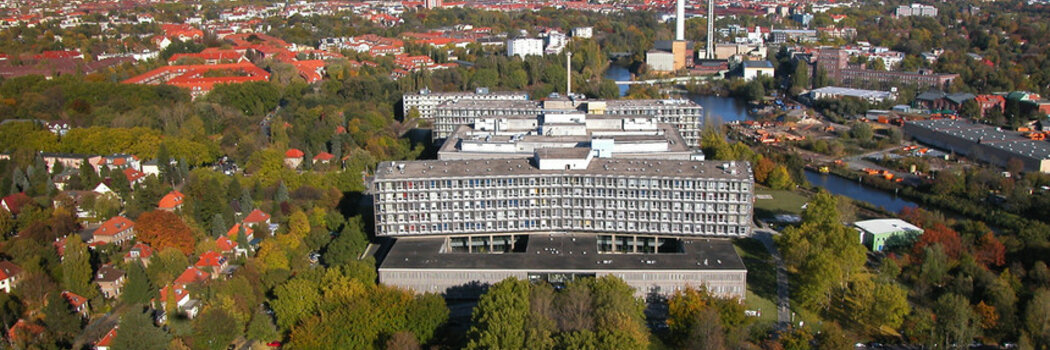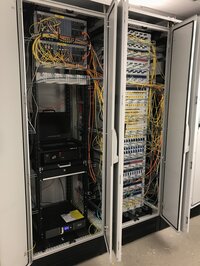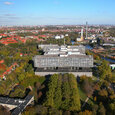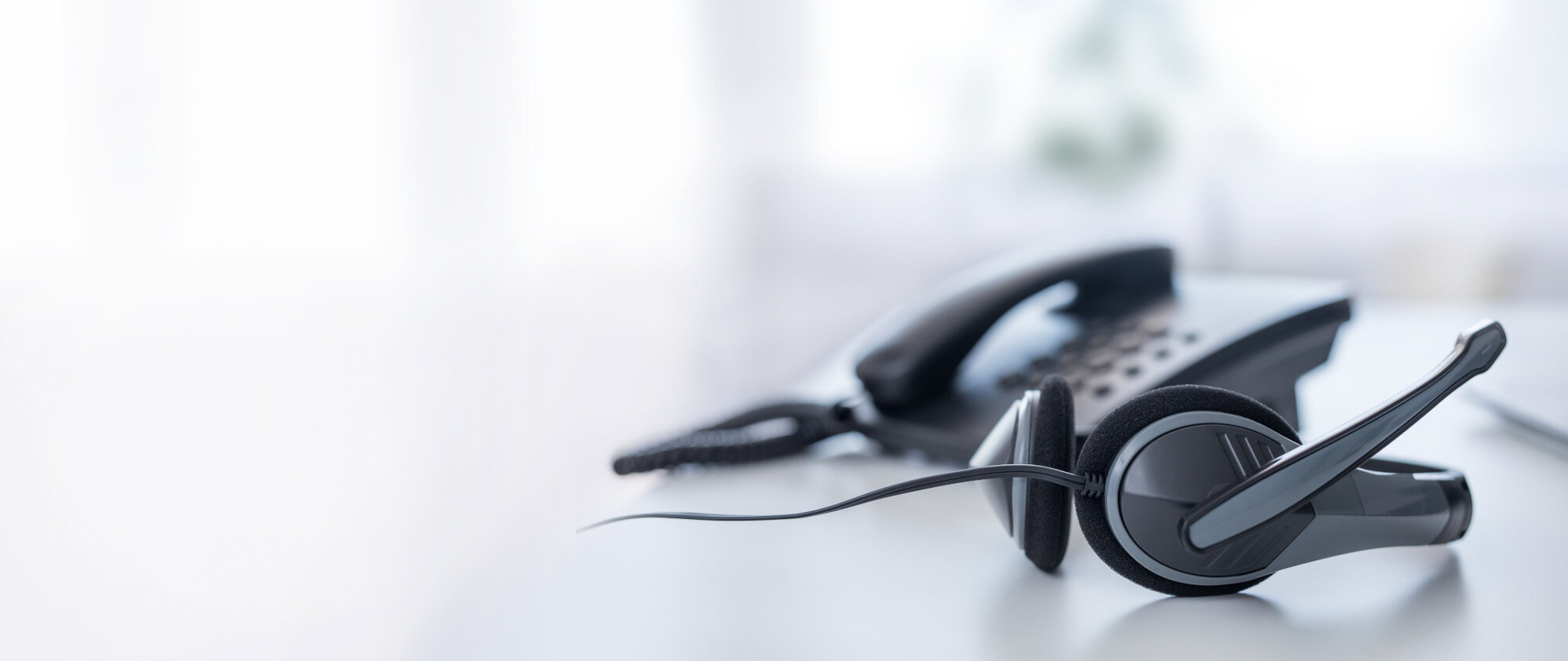
Comprehensive Digitisation in the Charité
The Charité belongs to the largest university medical centres in Europe and is one of the leading employers in Berlin. On the four distributed sites, physicians and scientists are researching, healing, and teaching on an international top level. There is no question – an outage of the IT system would be absolutely unacceptable. At the same time, it is vital to minimise both the time windows required for maintenance work and planned downtimes: At the Charité, all IT systems are operated in 24/7 mode. This basic condition has top priority in any planning of the infrastructure. That is valid both for the connection of operating theatres and for the growing sector of building automation, particularly for the connections in the inter-campus backbone.
Frank Kieß is the head of the Networks department on the business sector IT. He explains: "The inter-campus connections via DWDM multiplexers of MICROSENS constitute the backbone of our IT system." In terms of fiber optic connections, the medical centre benefits from the option to be provided its own dark fiber connections via the IT service provider ITDZ commissioned for this federal country. In this way, the three large-scale sites Campus Benjamin Franklin, Campus Charité Central, and Campus Virchow Medical Centre are interconnected by means of the optical transport platform of MICROSENS. The highest degree of digitisation is mirrored in the increasing requirements made on the inter-campus backbone: When physicians inspect digital patient records or radiologic image sequences, the data has to be transferred from the data centre, first of all. The consequence: The bandwidth must grow accordingly. Whereas CWDM technology was considered sufficient 10 years ago, the Charité has in the meantime opted for the DWDM technology, which offers a higher performance. All data records are transferred between the sites over a geo-redundant triangular structure with several DWDM channels with a bandwidth of 10 Gbps each. Considering the fact that at two out of the three large-scale sites data centres are operated with a virtualized server environment, it is clear that high-performance layer 2 connections are absolute necessities. In addition, the Storage Area Network (SAN) also uses several DWDM channels with 8 Gbps each with Fibre Channel.
In order to fulfil this and also future requirements, the Charité opted for a 40-channel DWDM system of MICROSENS. The reliability of the components becomes quickly perceivable from the explanation given by Frank Kieß: "Three years ago we attended a DWDN training by MICROSENS, just to keep our know-how up-to-date. In fact, the systems are running in an absolutely trouble-free and transparent mode. Fortunately, we still have not had to apply our troubleshooting knowledge up to now."

Micro Switches Provide and Ensure IT at the Sickbed
On the sector of Micro Switches, the relations to MICROSENS also date back far into the past. The main reason for that, as perceived by the IT experts of the Charité: Comprehensive documentation stipulations require a network connection at the beds. It will only be reliable, however, if potential separation is ensured in the interest of the safety of the patients. Micro Switches are applied to achieve the isolation of each medical device. No matter whether medical monitoring devices of intensive care or anaesthetics devices are concerned – they are all connected with the network via the MICROSENS switches installed in the cable duct and via own VLANs. In total, the Charité uses more than 500 of the compact devices in different operating theatres as well as in the incoming and outgoing rooms.
Fran Kieß identifies the central power feeding of the devices as a major benefit of the latest switch generation. Up to now, each Micro Switch had to be fed via its own power supply. During the emergency power feed simulations performed in regular intervals, it took some seconds until the diesel fuel power unit was able to take over the power feed. This led to the switch-off of the devices during short time intervals. The IT expert explains: "In the newly built operating, intensive care and emergency centre, as well as in parts of the neighbouring "Bettenhaus" complex on the Campus Charité Central and in the ophthalmic clinic in Steglitz, the Micro Switches are each connected with a central power supply. This is equipped with a buffer. In the case of a power outage, as we simulate it on a regular basis, it ensures the seamless further operation of the Micro Switches."
Industrial Switches Ensure Building Automation
This range of options is rounded off by the latest application area of MICROSENS at the Charité: Robust Industrial Switches for building automation. IT still is a big challenge in many cases for the measuring and control technologists, who are usually supposed to take if the building automation. And yet they cannot bypass networking technology. Within the buildings, building technology frequently uses its own fiber optic trunks. On the campus sector, building control technology is shielded via virtual routing and forwarding (VRF) instances, among other things. To ensure the reliability and security of the building control technology, the Networks department configures separate, protected networks. The final aim is again to ensure the uninterrupted operation of the devices and always to provide alternative routes. Initially, the existing Industrial Switches were monitored and regular updates were ensured. In the long term, however, it became obvious that a homogeneous networking technology would make more sense, and, thus, the strategy was changed: Whenever a hat rail switch has to be installed in a cabinet of the building control technology, the Charité now opts for MICROSENS Industrial Switches. In total, the components seamlessly fit in into the existing infrastructure: Software updates are easier to install and the administration of by now more than 80 Industrial Switches is performed centrally via the homogeneous MICROSENS network management system.
Long-Term Cooperation Strengthens Trust
The wide range of components, combined with the knowledge of their reliability, strengthens the cooperation between the Charité and MICROSENS. For Frank Kieß, it is clear that the university medical centre will continue to rely on the German vendor to meet any future requirements on the network sector. "The digitisation will continuously present new challenges to us, the demand for bandwidth keeps growing, and the networks must be able to meet these challenges. We are glad to have MICROSENS as our partner, who provides us with high-performance and – above all – very reliable network components."
„Copyright Charité – Universitätsmedizin Berlin“
About MICROSENS
Transmitting information via fiber optic connections offers numerous benefits. MICROSENS GmbH & Co. KG recognised this very early on. As one of the pioneers, the company has developed and produced high-performance communications and transmission systems in Germany since 1993. Individually matched to the demands of diverse usage areas and embedded in comprehensive concepts for individual sectors. But, above all, close to the customer. Technical challenges from customer projects are incorporated directly into product development. This way, IP-based automation solutions are created for modern buildings, cost-efficient network concepts for the office and workspace, robust and fail-safe solutions for industrial environments, optical transport systems future-oriented wide area networks and efficient coupling of sites and computer centres.











